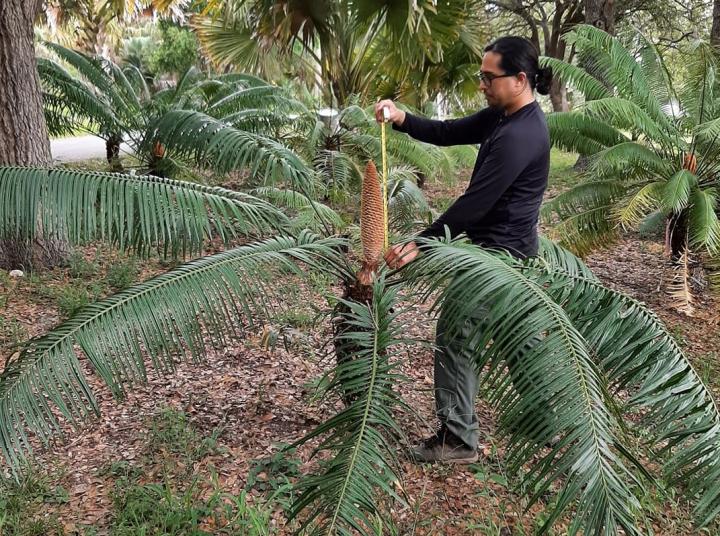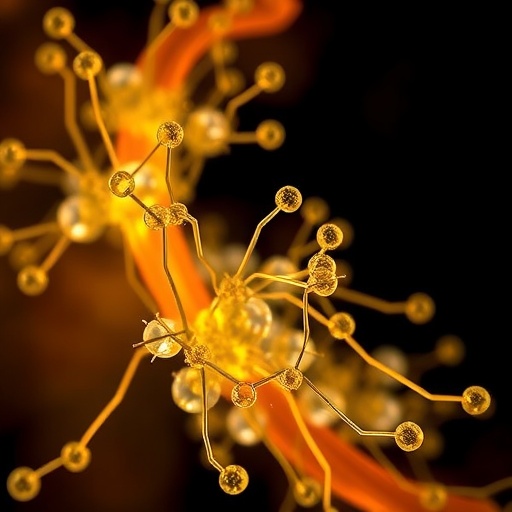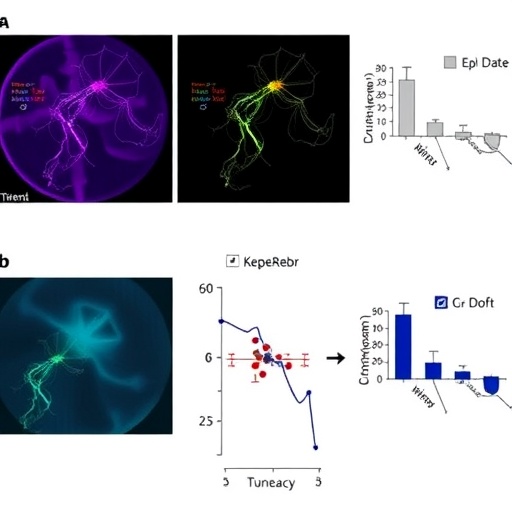Long-term monitoring needed to accurately measure transplantation success

Credit: Montgomery Botanical Center
A 15-year reciprocal transplant study on Guam’s native cycad tree, Cycas micronesica, by the Plant Physiology Laboratory at the University of Guam’s Western Pacific Tropical Research Center has revealed that acute adaptation to local soil conditions occurs among the tree population and is important in the survival rate of transplanted cycads. The results show that 70% to 100% of cycads that were transplanted in local conditions survived versus less than 10% that were transplanted in foreign conditions. The article describing the study has been published in the peer-reviewed journal Diversity (doi: 10.3390/d13060237).
Transplantation needed for conservation
Biologists often employ reciprocal transplant experiments to determine the level of local adaptation of plants or animals. The answers that these experiments provide are critically important for conservationists to make appropriate management decisions for endangered species.
Natural resource managers often need to transplant populations of threatened species as part of their approach to conservation. This frequently happens when unavoidable habitat destruction occurs, such as during the ongoing construction projects associated with Guam’s military buildup. In order for the transplantation project to be sustainable and regenerative, the transplanted individuals must be adapted to the recipient site.
“When nothing is known about local adaptation of a threatened tree species, the published research on this subject demands the use of translocation sites that are nearby the destroyed habitats,” said Benjamin Deloso, UOG cycad biologist. “Most tree species express adaptation to the local conditions, and when these trees are planted outside of those conditions, they tend to decline in health and eventually die.”
The only way to move beyond these methods of ensuring the use of a local recipient site is to conduct reciprocal transplant experiments among various habitats, which the Guam cycad study addressed.
Study process and results
The island of Guam is similar to many islands in that some of the soils are derived from volcanic activity and some of the soils are derived from historical oceanic reef activity that has been tectonically uplifted. Guam’s northern soils are mostly alkaline and porous, while Guam’s southern soils are mostly acidic and not porous.
The study involved planting sibling seedlings from two locations — one in the North and one in the South of Guam — to both locations. They were monitored for 15 years, with stem height and diameter and leaf number and maximum length measured yearly. In both locations, the local genotypes out-performed the foreign genotypes in terms of survival and growth, with 100% survival on the Southern site and 70% survival on the more hostile Northern site. Survival of the foreign genotypes began to decline by year four and was less than 10% by year 15.
“The chemical and hydrological traits of these two soil types are highly contrasting, and for this study to reveal localized adaptation of the cycad population to the different soils is not that surprising,” Deloso said. “But as with most predictions in science, the answers are not available until the study is designed, funded, implemented, completed, then published.”
Applicability to ongoing activities
Interpretations from study’s results are readily applicable to Guam’s ongoing conservation activities. The forests that are being destroyed during the military buildup contain thousands of the endangered cycad trees, and expensive tree rescue projects are being funded as a part of the construction budgets.
The knowledge that the UOG study developed indicates that the cycad’s greatest chance of long-term success at a translocation site requires a habitat with forest conditions that mimic those of the destroyed habitat. The largest transplant project to date employed a highly disturbed recipient site, where invasive trees have created soil conditions that contrast from those of the construction site, indicating long-term success of the conservation project is unlikely.
Long-term monitoring needed to accurately measure success
The study reveals that a longer timeline is needed to monitor and assess the true success of transplantation. If this project carried the typical one- to three-year timeline of most publicly funded projects, the paper states, the results would have erroneously indicated there was no local adaptation. The two Cycas micronesica garden sites did not begin to reveal local adaptation until four to five years after the gardens were implemented.
“Cycad plants are slow-growing, and most growth studies demand patience from funders,” Deloso said.
In looking to anticipate future conservation needs, the researchers suggest in their paper that natural resource managers look to knowledgeable cycad experts, who recognized the need for this valuable conservation information, designed this study, and started collecting cycad seeds 11 years before the species was federally listed on the U.S. Endangered Species Act in 2015.
###
Read the Study: Marler, T.E. 2021. Reciprocal Garden Study Reveals Acute Spatial-Edaphic Adaptation for Cycas micronesica. Diversity 13: 237. doi:10.3390/d13060237.
Media Contact
Jonas Macapinlac
[email protected]
Related Journal Article
http://dx.




